Luc Tuyman’s hazy, somber canvases evoke past histories. “By mixing white and color…I could make a canvas seem as though it had existed for thirty or forty years”. Deliberately old from the start, Tuymans paintings are about memory. The artist’s mastery of whites in his signature subdued palette made his painting of a cloud at David Zwirner’s booth in San Francisco resonate, calling to mind his 2005 painting Demolition (after the collapse of one of the World Trade Center towers in 2001), whose billowing clouds evoke such a deeply tragic feeling. The feeling in Tuyman’s 2014 cloud is uncertain, perhaps more hopeful than somber.
And again, a subtly elegant white-on-white palette appeared as one of Warhol’s Mona Lisas, in reverse, is up for auction next week in London.
Thus, this collection is born in work that is about being white, or that best expresses the artist’s intent in this presentation.
Enjoy!
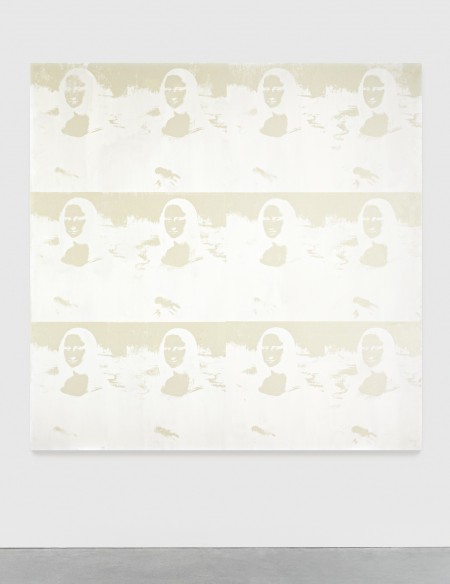
Andy Warhol (1928-1987), 12 Mona Lisas (Reversal Series), 1980, Acrylic and silkscreen ink on canvas, 80” X 80”.
Image courtesy of Sotheby’s [May 2014]
Articulated in screens of ethereal pearlescent white on a rich ivory ground, the Mona Lisa was first appropriated by Warhol in 1963. His minimalist color palette invites associations with such painting contemporaries as Robert Ryman, while also instills a melancholic dialogue connected to mortality. This was the work chosen to represent the artist at the 1984 Venice Biennale.
Watch for Warhol’s Two White Mona Lisas c. 1980 at auction February 10, 2016 in London.

Robert Ryman (b. 1930), Series #13 (White), 2004, oil on canvas, 42” X 42”, Private Collection, New York.
Courtesy The Pace Gallery, New York via Art21
Ryman’s work emphasizes the role that perception and context play in creating an aesthetic experience through an isolation of the most basic components: material, scale and support, with the square as the most neutral shape upon which to present his work in space.
“The Series paintings were done on canvas on a dark gray ground which projected the white and the color. I used three different whites – titanium, zinc and a kind of mixed white – which I don’t usually do. Usually I’m just using one because I’m not involved with painting the color white.”
(See Ryman at Dia Chelsea through July 29, 2016. Here is a closer look.)
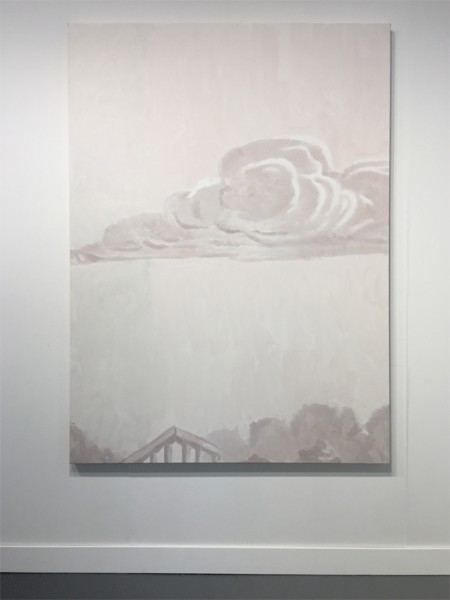
Luc Tuymans (b. 1958), Cloud, 2014, oil on canvas, 79 3/8” X 54 7/8” X 1 ¾”, David Zwirner, FOG Art & Design, San Francisco, 2016. (with detail)
Image courtesy of Suzanne Lovell, Inc.
Tuymans is credited with having contributed to the revival of painting in the 1990s. His work is quiet, restrained and at times unsettling. Painted from pre-existing imagery, either found or the artist’s own, the work is often slightly out-of-focus and sparsely colored, like third-degree abstractions from reality.
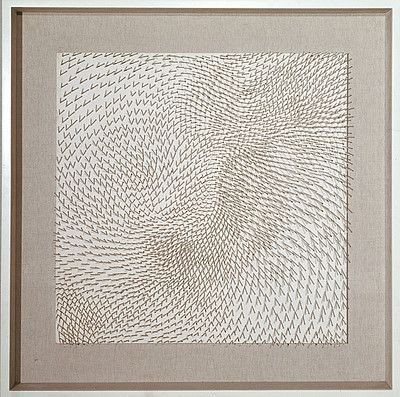
Günther Uecker (b. 1930), Bewegtes Feld, 1964. Collection Van Abbemuseum, Einhoven, VG Bild-Kunst, Germany.
Throughout the 1950s, Uecker sought out philosophies that he felt preached simplicity and purity, such as Buddhism, Taoism, and Islam. His fascination with purification rituals, such as the Gregorian chant, led him to engage in his own rituals of repetition, such as the hammering of nails for extended periods of time. By 1957, he had begun to integrate nails, and around 1960, corks and cardboard tubes, into the surface of his canvases to create relief works. In 1961, Uecker joined The Zero Group with a desire to return art to a “zero base,” giving it a fresh start after World War II. The artist hoped viewers of his art would be open to new levels of perception and consciousness through a concrete experience with the work.
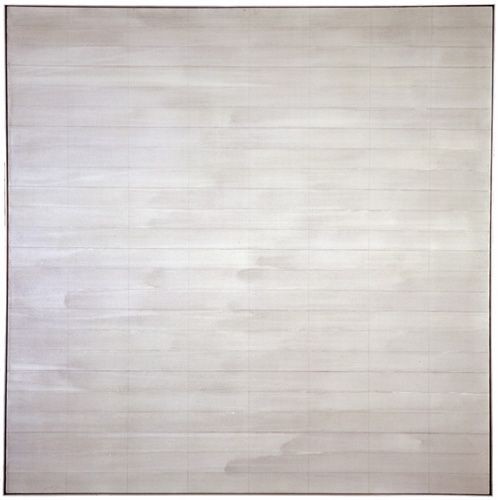
Agnes Martin (1912-2004), Trumpet, 1967, acrylic and graphite on canvas, 72” X 72”
Image courtesy of Zwirner & Wirth
The brushwork in Trumpet is expressionistic as asymmetrical applications create a stormy grey ground on top of a regular rectangular grid system. Agnes Martin’s paintings are “mediations on innocence, beauty, happiness and love”. [Agnes Martin: Paintings, Writings, Remembrances by Arne Glimcher, 2012]
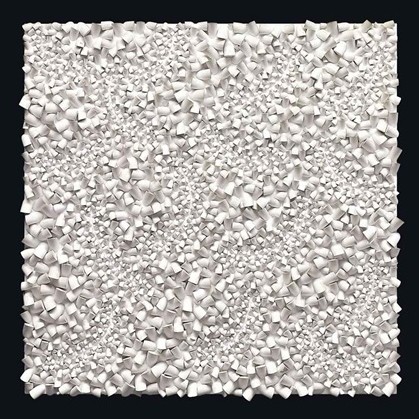
Sergio Camargo, Untitled Relief No. 195, painted wood construction, 1968, Painted wood construction.
Image courtesy of Christie’s New York
A student of Lucio Fontana in Buenos Aires, Camargo was known for these white reliefs that create a dialogue between mass and light. Lyrical undulations, whirling blooms, the materiality of wood and kinetic patterns, his work has been described as “a kind of white mould into which light seems to imprint its natural rhythm; it bears the traces of each slight transformation as clean morning light changes to plain afternoon light and later to elusive evening light. It is not there to tell us anything but to return, amplified, what we bring to it”. (see Christie’s Lot Notes, 12 Nov 2013, Lot 26)

Louise Nevelson (1899-1988), White Vertical Water, 1972
Image courtesy of The Guggenheim, New York
The scale and formal purity of the all-white (and all-black sculptures for which she is best known) focus the viewer on the play of light, shadow and form. Solemn and grand, White Vertical Water evokes nature: water, squirming fish, symbols and tropes from past civilizations.
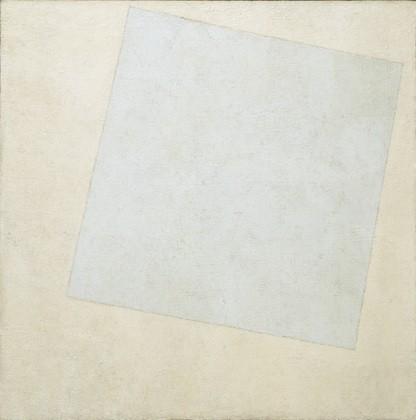
Kazmir Malevich, Suprematist Composition: White on White, 1918, oil on canvas.
Image courtesy of The Museum of Modern Art, New York.
A must in this group. Malevich painted White on White in 1918 as a suprematist work meant to demand extended viewing in order to grasp the contrast between white hues, the imprecise delineation of the inner square, and the effect such a painting has on you, the viewer, “the supremacy of pure feeling”. The painting evokes a feeling of floating, with the color white symbolizing infinity, and the slight tilt of the square suggests movement.
